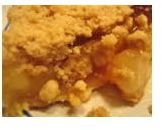An Elementary Introduction to Heat Capacity
To cut down on cleaning time, I like to line my baking utensils with aluminum foil. When I use an aluminum cake pan, say to heat food, I notice that the liner is much cooler than the pan after I remove them from the oven. However, the heat from my iron or glass baking ware is such that I can feel it emanating even when I use the knitted oven mitt my daughter gave to me when she was in grade school. I am much more careful to avoid accidentally touching them when I transfer food, and I allow a much greater cooling interval to elapse before I attempt to clean them. The differences in temperature concerning the heating and cooling of my baking utensils is attributed to their heat capacity.
The transfer of heat to or from an object is related to its temperature. This relationship is specified by a direct proportionality constant C, called the heat capacity, and the equation is:
(1) Q = CΔT
with Q representing heat and ΔT the temperature change. C is measured in energy per degree or energy per kelvin. For example, if Q is in joules and temperature is in Kelvin, C is J/K. Equally valid units are cal/oC or cal/K or Btu/oF, and we can see this relationship more easily by solving directly for C:
(2) C = Q/ΔT
Recall that specific heat is a characteristic of materials such that substances with a high value heat and cool more rapidly than substances with a low value.We can define C in terms of the specific heat c and mass m:
(3) C = mc
This also tells us that specific heat c is the heat capacity per unit mass or C/m, which is why c is also referred to as the specific heat capacity. Substituting our new definition of heat capacity C into equation (1) gives us:
(4) Q = mcΔT
Note that heat capacity is not a capacity in the usual sense of the meaning. Heat flow into objects is not restricted without outside means, which is why you have to be careful not to burn your food or over boil water for your tea or leave your chocolate out in the sun. It is also why forest fires and lava from volcanos are so dangerous. Heat capacity tells us the amount of heat needed to raise the temperature of an object. It is more akin to inertia in uniform motion or resistance in electricity, except that in this case it is heat we are using to measure the sensitivity to change.
The specific heat depends on temperature, but on average, for aluminum it is 900 J/kg*K, which means it takes 900 joules of heat to raise 1 kg of aluminum 1 kelvin. For iron or steel it is 447 J/kg*K, and for pyrex glass it is 750 J/kg*K. So, for an oven set at 488.71 K or 420 degrees Farenenheit, my very thin sheet of aluminum foil cools off more rapidly than the heavier aluminum cake pan. However, my even heavier items of cookie sheet ironware and glass casserole pan retain the heat better as they are less resistant to change, and it is easier for me to burn myself if I am careless.
The specific heat of water is 4186 J/kg*K or 1 cal/g*oC, which is very high. This high resistance makes water slower to heat than another substance at the same temperature and equivalent mass. It also makes it more slower to cool than a similar substance. This is why hot water bottles can keep you warm, and it is the water content in the fruit filling of your holiday pie instead of the crust that makes you burn your tongue when you bite into it. Ice is 2100 J/kg*K, another relatively high inertial value which makes your ice packs effective.
yummy pie by l0stpr0fet
To understand more on the thermodynamics of cooking from an oven or stove top be sure to refer back to the aforementioned Bright Hub article on heat transfer. The article treats of radiation, which is the effect you feel when you place your hand near bake ware even after you have removed it from the oven for more than a minute. It also treats of conduction and convection, and you are using both methods to heat your food when you place your roast in the oven and boil vegetables on your stove.
